Abstract
The relatively high level of fatty acids in soybean nodules and rhizobia from soybean nodules suggested that the glyoxylate cycle might have a role in nodule metabolism. Several species of rhizobia in pure culture were found to have malate synthetase activity when grown on a number of different carbon sources. Significant isocitrate lyase activity was induced when oleate, which presumably may act as an acetyl CoA precursor, was utilized as the principle carbon source. Malate synthetase was active in extracts of rhizobia from nodules of bush bean (Phaseolus vulgaris L.), cowpea (Vigna sinensis L.), lupine (Lupinus angustifolius L.) and soybean (Glycine max L. Merr.). Activity of malate synthetase was, however, barely detectable in rhizobia from alfalfa (Medicago sativa L.), red clover (Trifolium pratense L.) and pea (Pisum sativum L.) nodules. Appreciable isocitrate lyase activity was not detected in rhizobia from nodules nor was it induced by depletion of endogenous substrates by incubation of excised bush bean nodules. Although rhizobia has the potential for the formation of the key enzymes of the glyoxylate cycle, the absence of isocitrate lyase activity in bacteria isolated from nodules indicated that the glyoxylate cycle does not operate in the symbiotic growth of rhizobia and that the observed high content of fatty acids in nodules and nodule bacteria probably is related to a structural role.
Full text
PDF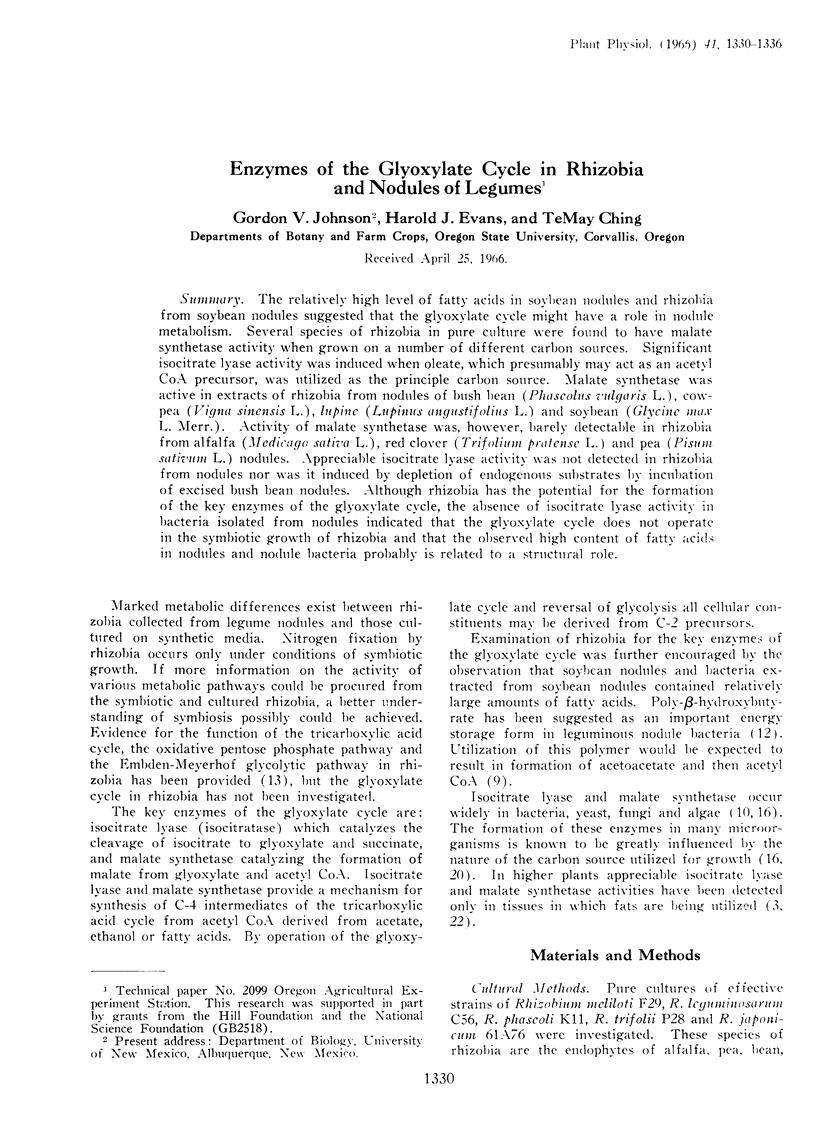
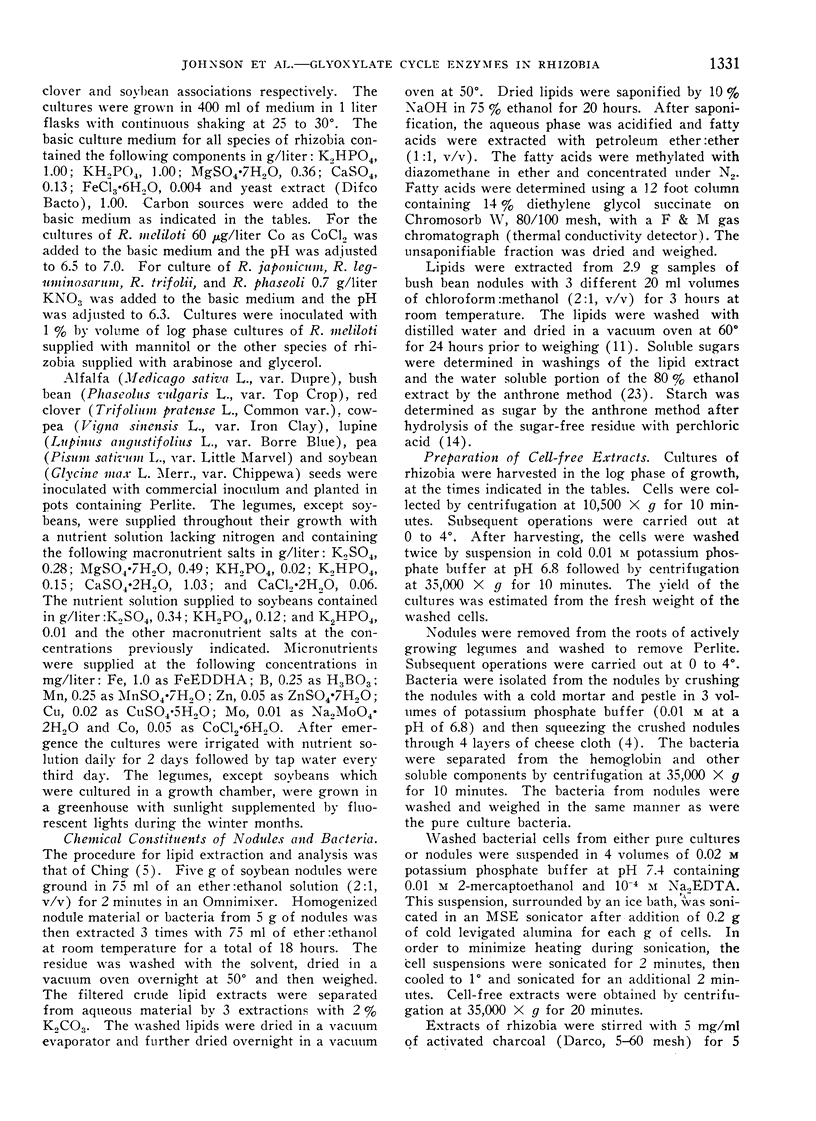
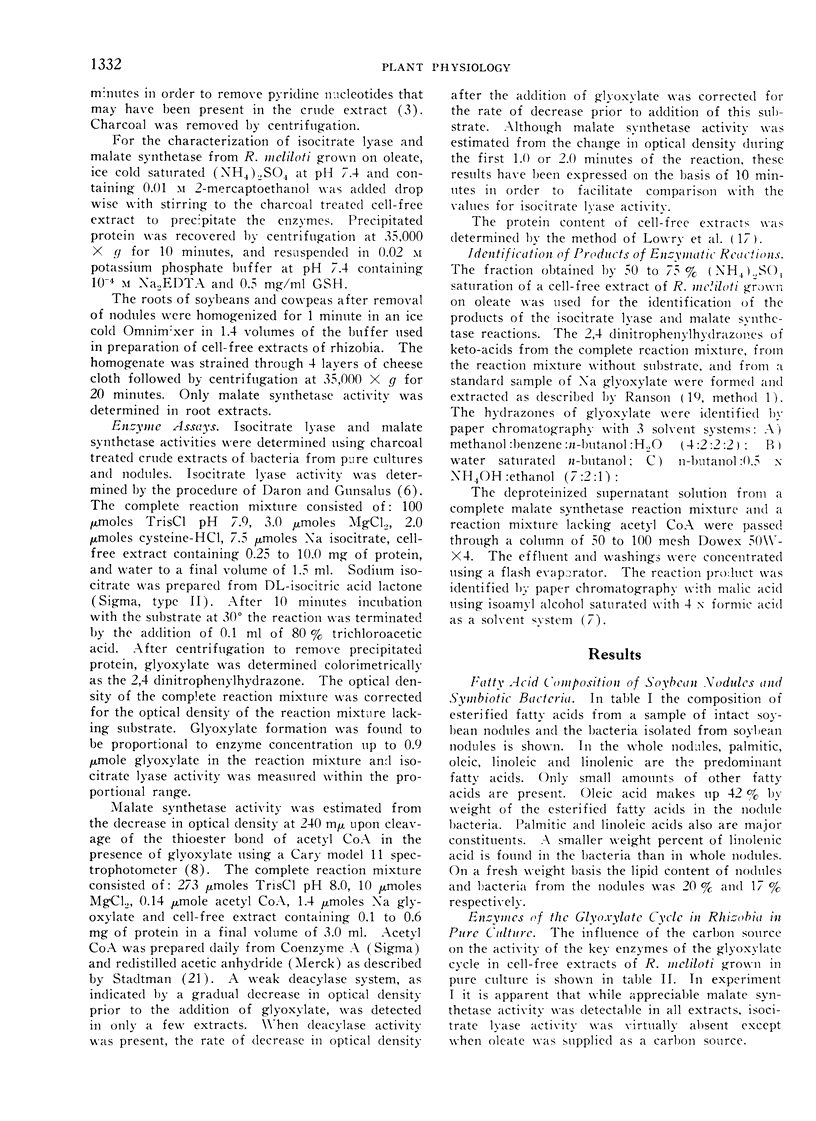

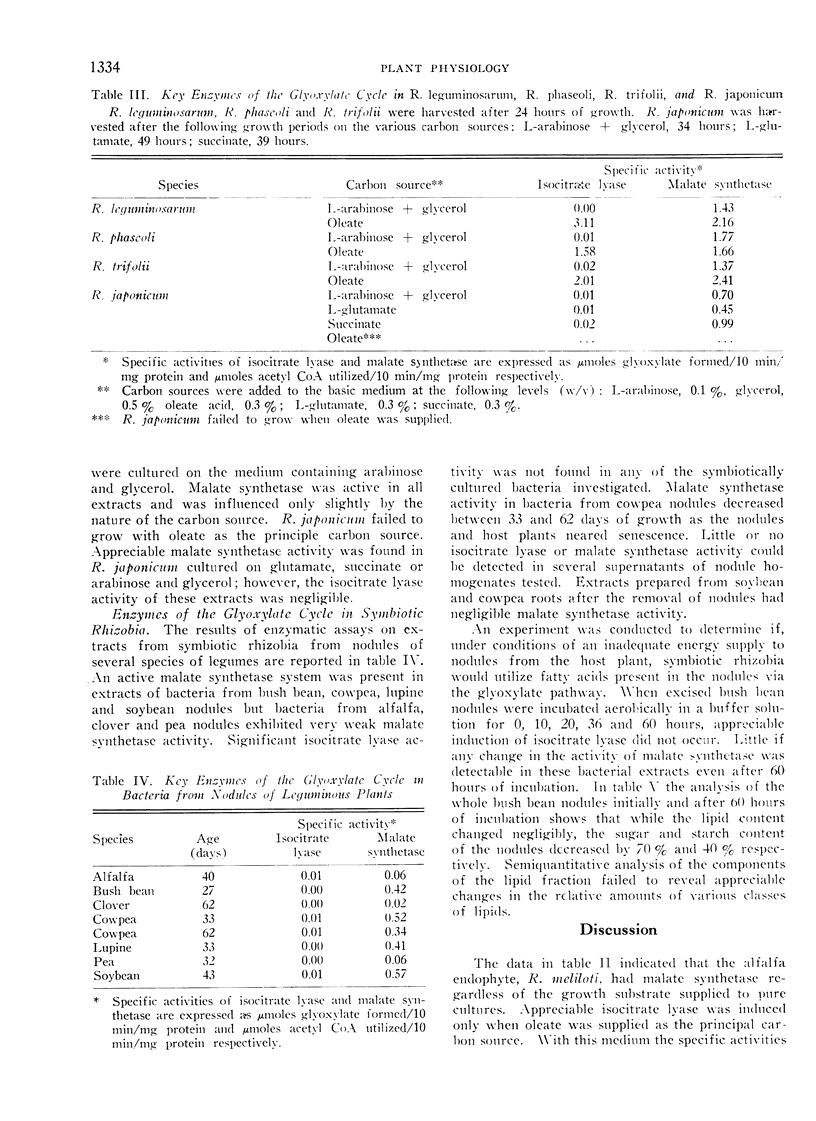

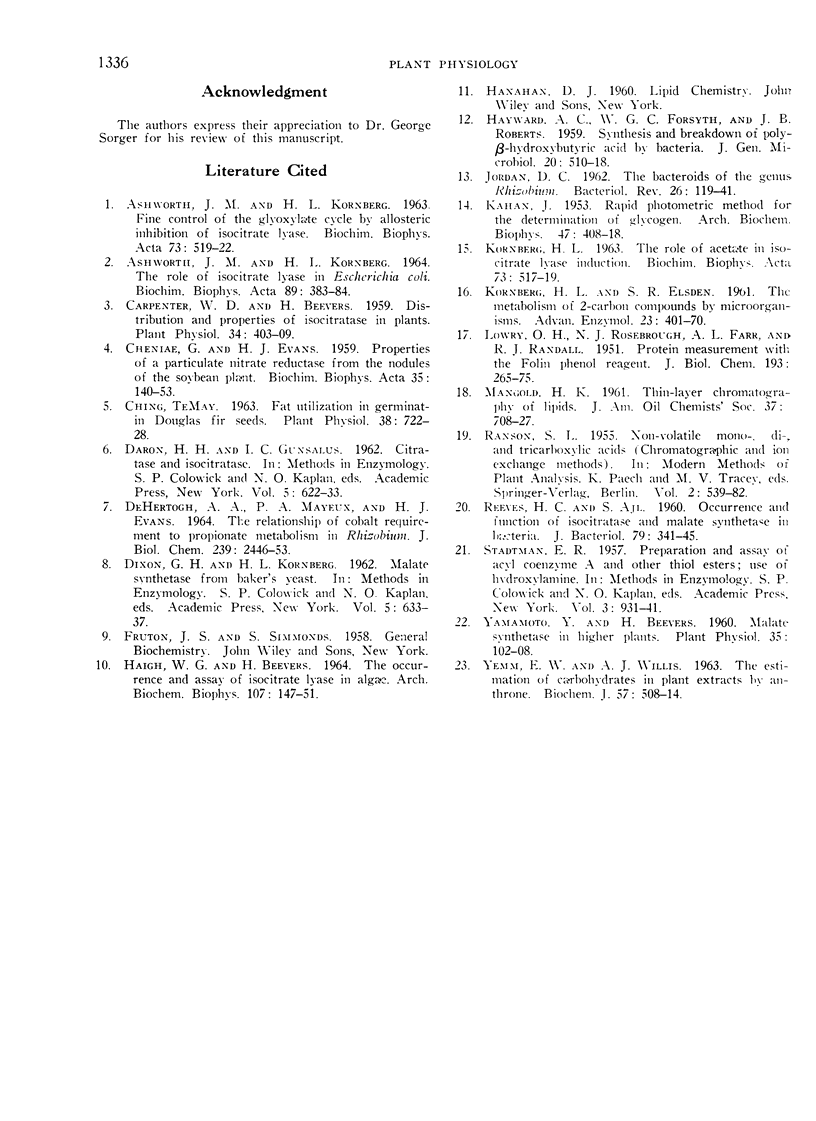
Selected References
These references are in PubMed. This may not be the complete list of references from this article.
- ASHWORTH J. M., KORNBERG H. L. THE ROLE OF ISOCITRATE LYASE IN ESCHERICHIA COLI. Biochim Biophys Acta. 1964 Aug 26;89:383–384. doi: 10.1016/0926-6569(64)90237-8. [DOI] [PubMed] [Google Scholar]
- CHENIAE G., EVANS H. J. Properties of a particulate nitrate reductase from the nodules of the soybean plant. Biochim Biophys Acta. 1959 Sep;35:140–153. doi: 10.1016/0006-3002(59)90343-9. [DOI] [PubMed] [Google Scholar]
- Carpenter W. D., Beevers H. Distribution and Properties of Isocitritase in Plants. Plant Physiol. 1959 Jul;34(4):403–409. doi: 10.1104/pp.34.4.403. [DOI] [PMC free article] [PubMed] [Google Scholar]
- HAIGH W. G., BEEVERS H. THE OCCURENCE AND ASSAY OF ISOCITRATE LYASE IN ALGAE. Arch Biochem Biophys. 1964 Jul;107:147–151. doi: 10.1016/0003-9861(64)90282-6. [DOI] [PubMed] [Google Scholar]
- JORDAN D. C. The bacteroids of the genus Rhizobium. Bacteriol Rev. 1962 Jun;26:119–141. [PMC free article] [PubMed] [Google Scholar]
- KORNBERG H. L., ELSDEN S. R. The metabolism of 2-carbon compounds by microorganisms. Adv Enzymol Relat Subj Biochem. 1961;23:401–470. doi: 10.1002/9780470122686.ch8. [DOI] [PubMed] [Google Scholar]
- LOWRY O. H., ROSEBROUGH N. J., FARR A. L., RANDALL R. J. Protein measurement with the Folin phenol reagent. J Biol Chem. 1951 Nov;193(1):265–275. [PubMed] [Google Scholar]


